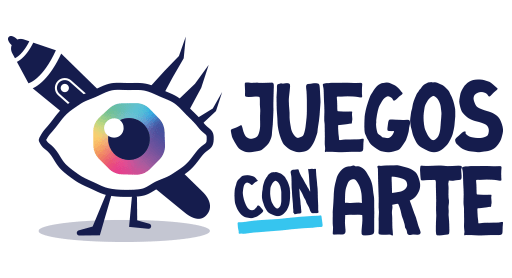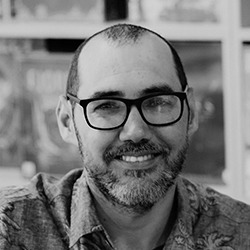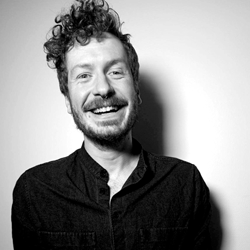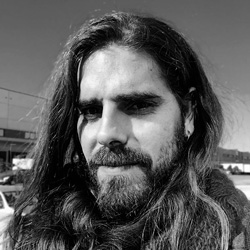
Hoy entrevistamos a la concept artist e ilustradora francesa Laura Bevon, ella es la responsable del arte de un gran número de juegos de mesa. Laura nos explica cómo fue la creación de Sabika uno de sus últimos trabajos y también nos hablará de su trayectoria profesional.
Te dejamos con la entrevista, no olvides compartir la entrevista si te ha gustado 😉.
ENG | Welcome Laura, thanks for collaborating with us! For our readers who don’t know your work, could you tell us a little about yourself and your professional career?
Sure! The beginning of my story is pretty classical : “I’ve drawn for as long as I can remember”, copying animal pictures when I was a kid, enjoying comics and manga as a teen, drawing during school lessons, etc… So without much thought, I decided to go forth on the art path. First by studying cinema for a bit (which was the closest thing to art available where I grew up), then joining art school when I was in the age of being a student. After a very short internship in a TCG company, I decided to take the leap and became freelance instead of going back to art school, as I wasn’t really happy there. That was in 2012. I continued working on TCGs for a while, then on some tabletop RPGs and indie video games, and finally it was boardgames.
ESP | Bienvenida Laura, ¡gracias por colaborar con nosotros! Para nuestros lectores que no conozcan tu trabajo, ¿podrías hablarnos un poco de ti y de tu trayectoria profesional?
Por supuesto. El principio de mi historia es bastante clásico : «Dibujo desde que tengo uso de razón», copiando dibujos de animales de pequeño, disfrutando de los cómics y el manga de adolescente, dibujando durante las clases del colegio, etc… Así que sin pensarlo mucho, decidí seguir por el camino del arte. Primero estudiando cine durante un tiempo (que era lo más parecido al arte que había donde crecí), y luego apuntándome a la escuela de arte cuando ya estaba en edad de ser estudiante. Tras unas brevísimas prácticas en una empresa de TCG, decidí dar el salto y hacerme freelance en lugar de volver a la escuela de arte, ya que allí no era realmente feliz. Eso fue en 2012. Seguí trabajando en TCGs durante un tiempo, luego en algunos RPGs de mesa y videojuegos indie, y finalmente fueron los juegos de mesa.
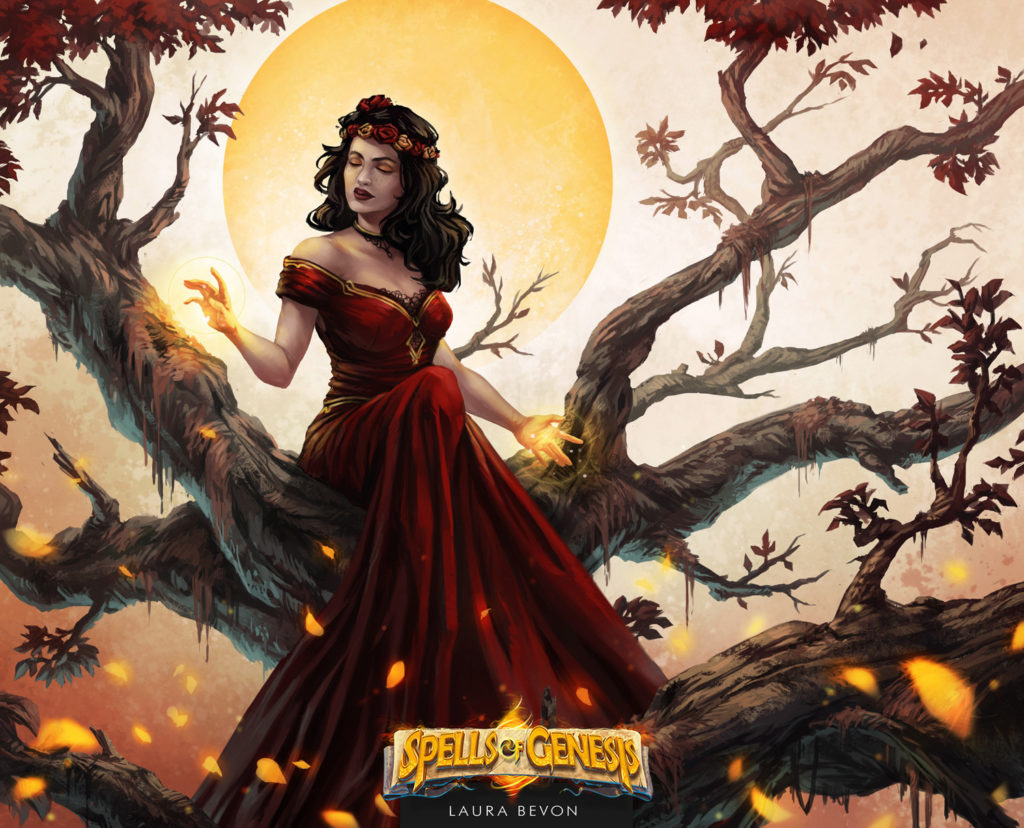
ENG | What are your references, what inspires you or influences you to work?
Oh, I couldn’t list them all. I’m a jack-of-all-trades, and illustration is just one aspect of my life, so I get inspired by many many topics. Mythology, symbolism and human sciences come back a lot. Same for art, inspirations come and go. Though, in my youth, I enjoyed comics a lot, and Marko Djurdjevic, a cover artist for Marvel at that time, was literally my hero. That’s the name that has stuck the longest, and I’m still in awe in front of his studio’s work. In the BG microcosm, the two big names that I look for the most are Dutrait and Biboun.
ESP | ¿Cuáles son tus referentes, qué te inspira o te influye para trabajar?
No podría enumerarlos todos. Soy una persona polifacética y la ilustración es sólo un aspecto de mi vida, así que me inspiro en muchos temas. La mitología, el simbolismo y las ciencias humanas me vienen mucho a la cabeza. Lo mismo ocurre con el arte, las inspiraciones van y vienen. Aunque, en mi juventud, me gustaban mucho los cómics, y Marko Djurdjevic, portadista de Marvel en aquella época, era literalmente mi héroe. Es el nombre que más se me ha pegado, y todavía me asombro ante el trabajo de su estudio. En el microcosmos de BG, los dos grandes nombres que más busco son Dutrait y Biboun.
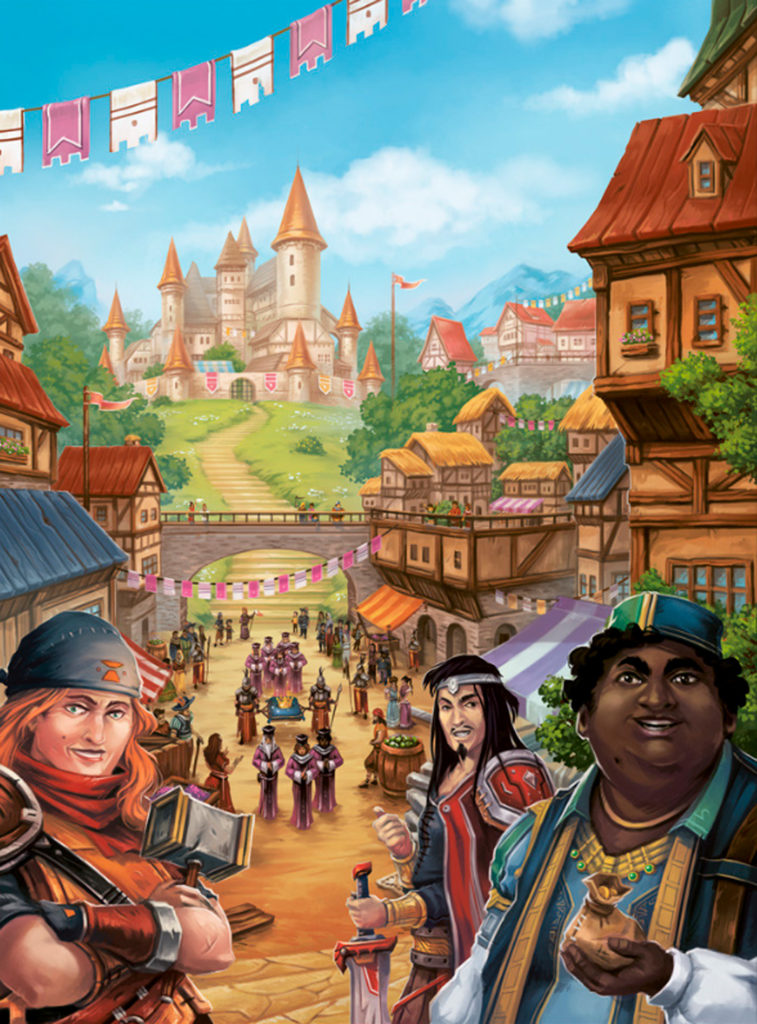
ENG | How did you first get involved in the illustration of a board game and what did you learn from that project?
My first BG project was King’s Guild. It was not exported to the EU (as far as I know) but it’s a lovely game with a medieval theme. I stay primarily a fantasy artist so the theme spoke to me. The format was also totally new, and that always wins points with me. It was huge in terms of components for a first project, but the challenge was enjoyable. And the main thing I discovered is simply… that the BG industry was a nice one to be in! I’m someone who needs to feel in adequation with the work environment. Here the conditions and ethics are great, it’s professional without excess pressure, the team spirit is generally present, and as a nice bonus, you end up with a tangible product in hand! And that’s pretty satisfying in our over-digitalized world.
ESP | ¿Cómo te involucraste por primera vez en la ilustración de un juego de mesa y qué aprendiste de ese proyecto?
Mi primer proyecto en los juegos de mesa fue King’s Guild. No se exportó a la UE (que yo sepa), pero es un juego precioso de temática medieval. Yo soy ante todo una artista de fantasía, así que el tema me atraía. El formato también era totalmente nuevo, y eso siempre gana puntos conmigo. Era enorme en términos de componentes para un primer proyecto, pero el reto fue agradable. Y lo más importante que descubrí es, sencillamente… ¡que la industria de los juegos de mesa es increíble! Soy una persona que necesita sentirse a gusto en el entorno de trabajo. Aquí las condiciones y la ética son estupendas, hay profesionalidad sin exceso de presión, el espíritu de equipo suele estar presente y, como buen extra, ¡acabas con un producto tangible en la mano! Y eso es bastante satisfactorio en nuestro mundo excesivamente digitalizado.
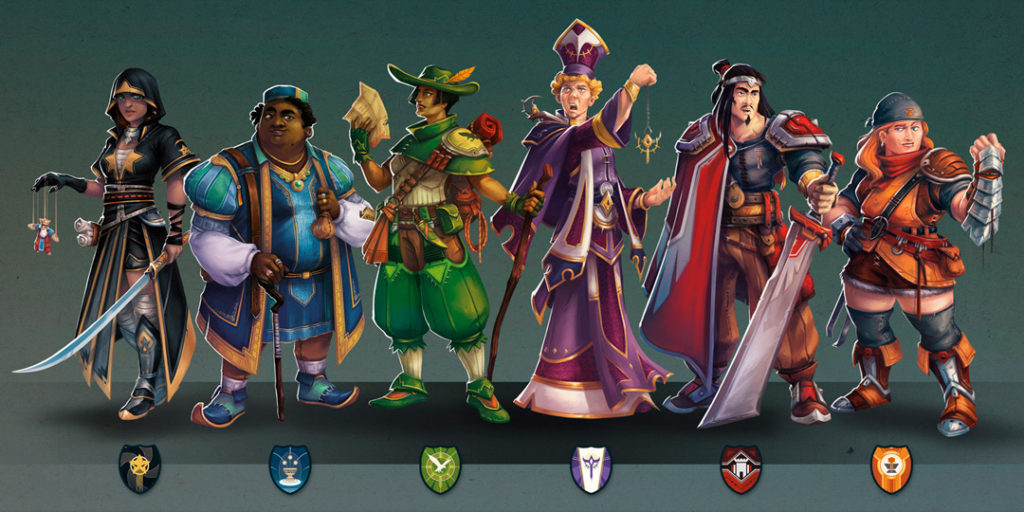
ENG | How would you define your style? What techniques do you usually use?
It’s not really a question I ask myself anymore, so I would describe it like I suppose viewers see it : colourful and semi-realistic ? You tell me. Same as with my inspirations, I just go with the flow. When I do personal stuff I tend to have a slightly more realistic approach and still explore a lot. But with the games, that mostly depends on the thematic and how open to explore the publisher is. As for the technicalities, I work with Photoshop for the whole project except for a few composition scribbles on paper at early stages. On screen, my main process is to sketch quite loosely, then render in color directly and bring back the line through painting to give a bit more character and tension to things.
ESP | ¿Cómo definiría tu estilo? ¿Qué técnicas utilizas habitualmente?
En realidad ya no es una pregunta que me haga, así que lo describiría como supongo que lo ven los espectadores: ¿colorido y semirrealista? Dígamelo usted. Igual que con mis inspiraciones, me dejo llevar por la corriente. Cuando hago cosas personales, tiendo a tener un enfoque ligeramente más realista y sigo explorando mucho. Pero con los juegos, eso depende sobre todo de la temática y de lo abierto a explorar que esté el editor. En cuanto a los aspectos técnicos, trabajo con Photoshop para todo el proyecto, salvo algunos garabatos de composición en papel en las primeras fases. En la pantalla, mi proceso principal consiste en dibujar con bastante soltura, luego renderizar en color directamente y devolver la línea a través de la pintura para dar un poco más de carácter y tensión a las cosas.
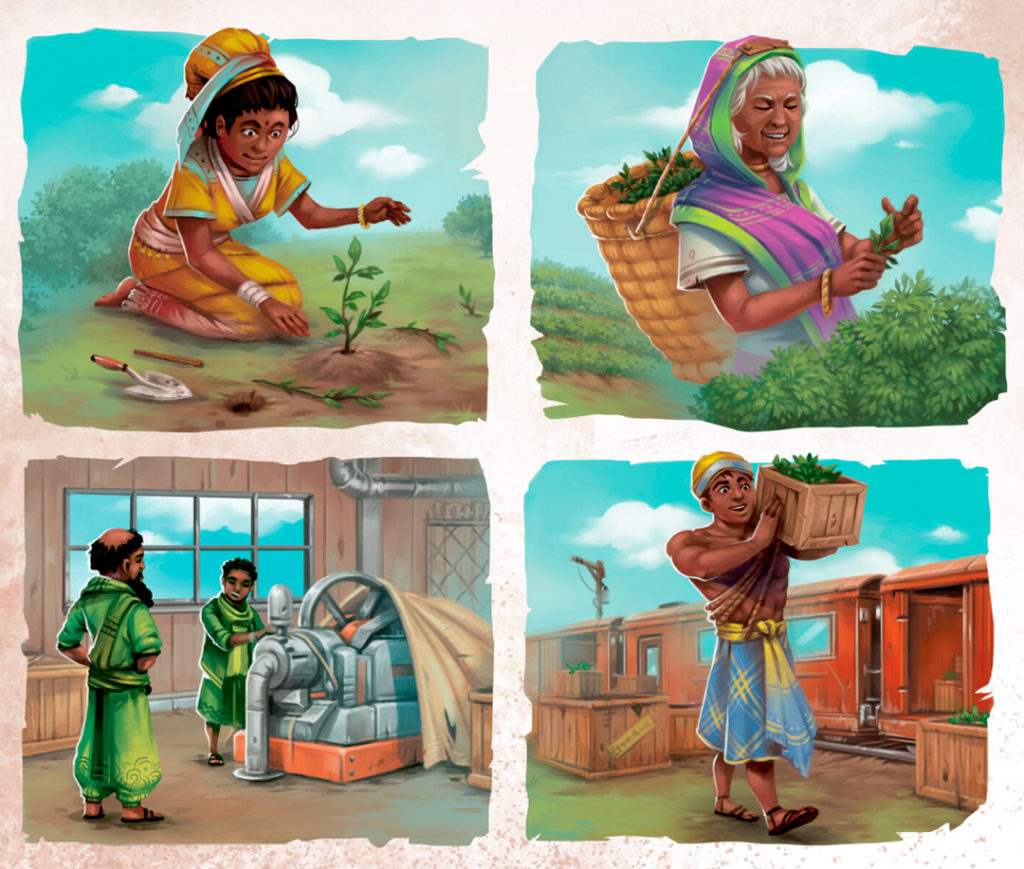
ENG | You have worked on big board game titles such as Ceylon, Hippocrates, Between Two Castles of Mad King Ludwig, Between Two Cities, Sabika… How do you think this experience has affected your approach to new projects?
Err, I don’t know. I don’t believe there is a before and an after. Sure experience brings self-confidence and all, but I don’t think I treat the projects differently than I did before. I’m just careful choosing those that look enjoyable to me.
ESP | Has trabajado en grandes juegos de mesa como Ceylon, Hippocrates, Between Two Castles of Mad King Ludwig, Between Two Cities, Sabika… ¿Cómo cree que esta experiencia ha afectado a su enfoque de los nuevos proyectos?
Err, no lo sé. No creo que haya un antes y un después. Claro que la experiencia aporta confianza en una misma y todo eso, pero no creo que trate los proyectos de forma diferente a como lo hacía antes. Simplemente elijo con cuidado los que me parecen agradables.

ENG | What steps do you follow when working on a board game? Tell us about this creative process, from the appearance of the first idea or purpose to the final work.
First, there is discussion with the publisher, ideally with a prototype. Then, ideal scenario again, when all the assets are defined, I do a composition sketch of most, if not all the pieces. It’s really important to keep an overall unity to treat all the main components together imo. After that, I gather a bit of references, and then it depends on the subject, I either draw a detailed sketch when I lack familiarity with it, or throw in the first colors when it’s under control. And if those are greenlighted by the team, I go forth with painting. This three steps process generally helps avoiding late changes.
ESP | ¿Qué pasos sigue cuando trabaja en un juego de mesa? Háblenos de ese proceso creativo, desde la aparición de la primera idea o propósito hasta la obra final.
Primero se habla con el editor, idealmente con un prototipo. Luego, escenario ideal de nuevo, cuando todos los activos están definidos, hago un boceto de composición de la mayoría, si no de todas las piezas. Es muy importante mantener una unidad general para tratar todos los componentes principales juntos, en mi opinión. Después de eso, reúno un poco de referencias, y entonces depende del tema, o dibujo un boceto detallado cuando me falta familiaridad con él, o tiro los primeros colores cuando está bajo control. Y si el equipo les da el visto bueno, sigo adelante con la pintura. Este proceso de tres pasos suele ayudar a evitar cambios tardíos.
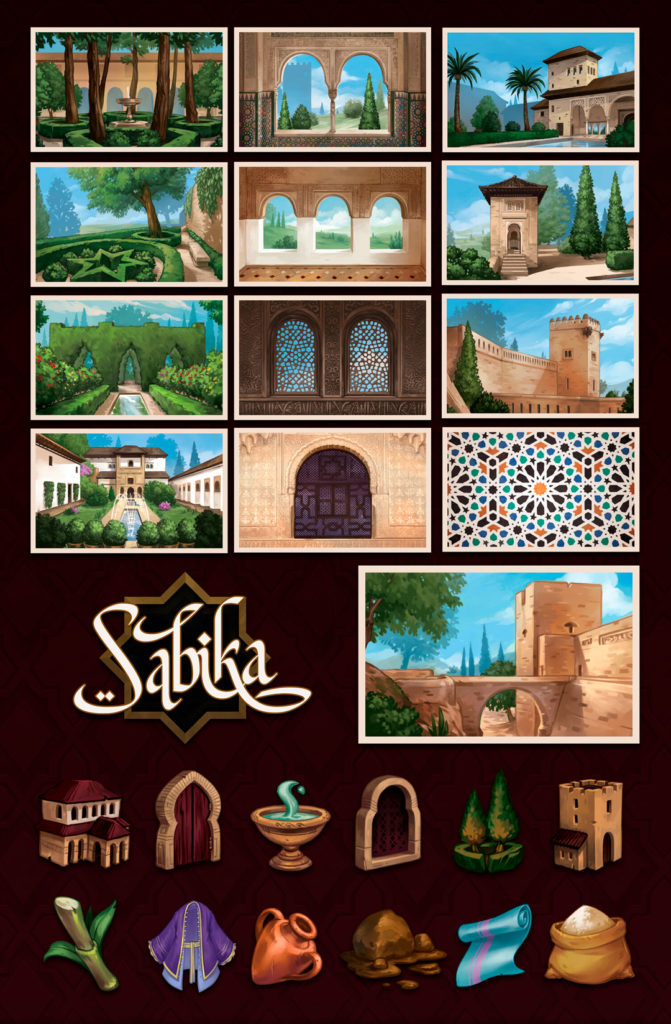
ENG | Among all your works we want to highlight the one for Sabika, created by Germán Millán and edited by Ludonova. What challenges or peculiarities do you remember about the project?
Sabika was probably the biggest challenge for me so far, because far away from my comfort zone (buildings vs. character art). You’ve seen the board : it’s huge and complex, and designers themselves went through many iterations. I’m a squarish person and don’t fare very well when there is a lot of blur. Combined with the challenging topic in itself, some days were frustrating as I couldn’t envision clearly where to go. Luckily, slowly but surely, things fell into place and we could tame this big beast. I think the last part of the board that I painted was the fountain, my favorite part with the map. But the fountain sticks out from the rest of the board, it’s a bit brighter… maybe that was the relief haha.
ESP | Entre todos tus trabajos queremos destacar el realizado para Sabika, creado por Germán Millán y editado por Ludonova. ¿Qué retos o peculiaridades recuerdas del proyecto?
Sabika ha sido probablemente el mayor reto para mí hasta el momento, porque se aleja mucho de mi zona de confort (edificios vs. arte de personajes). Ya has visto el tablero: es enorme y complejo, y los propios diseñadores pasaron por muchas iteraciones. Soy una persona cuadriculada y no me va muy bien cuando hay mucho desenfoque. Combinado con el reto que suponía el tema en sí, algunos días fueron frustrantes, ya que no podía ver con claridad hacia dónde ir. Por suerte, poco a poco, las cosas fueron encajando y pudimos domar a esta gran bestia. Creo que la última parte del tablero que pinté fue la fuente, mi parte favorita del mapa. Pero la fuente destaca del resto del tablero, es un poco más clara… quizás sea ese el motivo jaja.
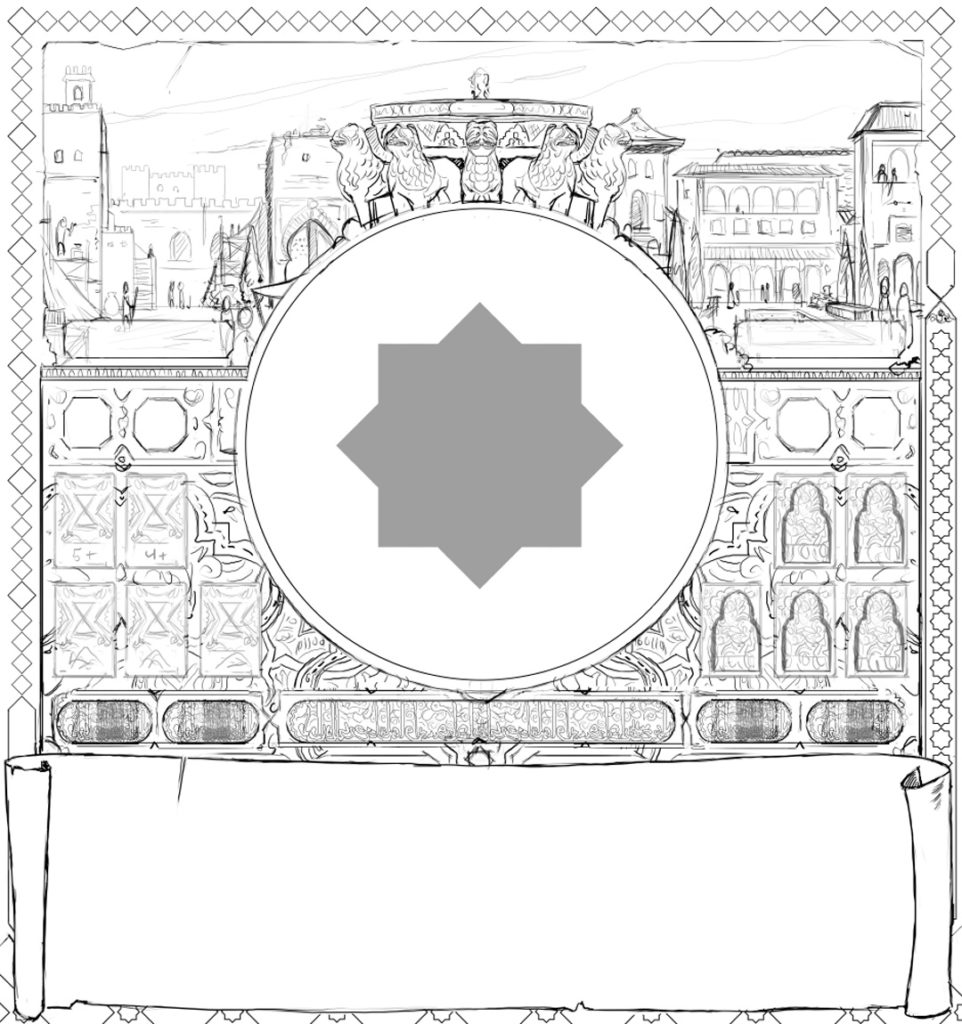
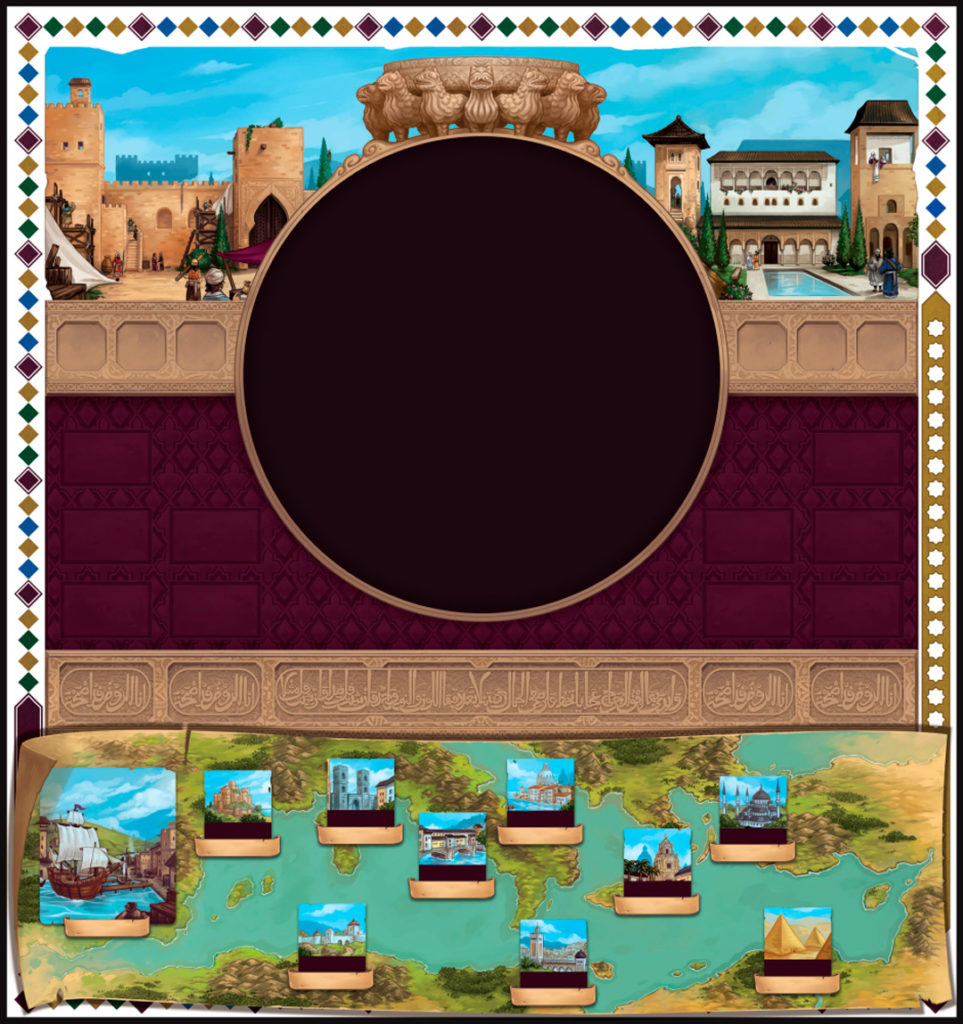
ENG | Sabika has a great documentary load during its creation to correctly represent the Nasrid period and the construction of the Alhambra, how was the documentation process to recreate the costumes, decorations and characters that appear?
The publisher, author and the specialists that helped them did everything regarding the context and poems. They also provided me with some visual references, because some things were easier to find in Spanish. I went to the Alhambra myself some years ago and still had some tourist books which proved very useful. For the rest, there is no secret: it’s the usual Googl-ing, Wikipedia-ting, and similar virtual lurking. I don’t pretend all I did is historically correct though. Aside from possible mistakes, I generally make it a conscious choice to detach myself from references once inspiration kicks in. Poetic licence.
ESP | Sabika tiene una gran carga documental durante su creación para representar correctamente el periodo nazarí y la construcción de la Alhambra, ¿cómo fue el proceso de documentación para recrear los trajes, decorados y personajes que aparecen?
El editor, autor y los especialistas que los ayudaron hicieron todo lo referente al contexto y los poemas. También me proporcionaron algunas referencias visuales, porque algunas cosas eran más fáciles de encontrar en español. Yo mismo fui a la Alhambra hace algunos años y todavía tenía algunos libros turísticos que me resultaron muy útiles. Por lo demás, no hay ningún secreto: se trata de los habituales Googl-ing, Wikipedia-ting y similares merodeos virtuales. Aunque no pretendo que todo lo que hice sea históricamente correcto. Aparte de los posibles errores, en general tomo la decisión consciente de desprenderme de las referencias cuando llega la inspiración. Licencia poética.
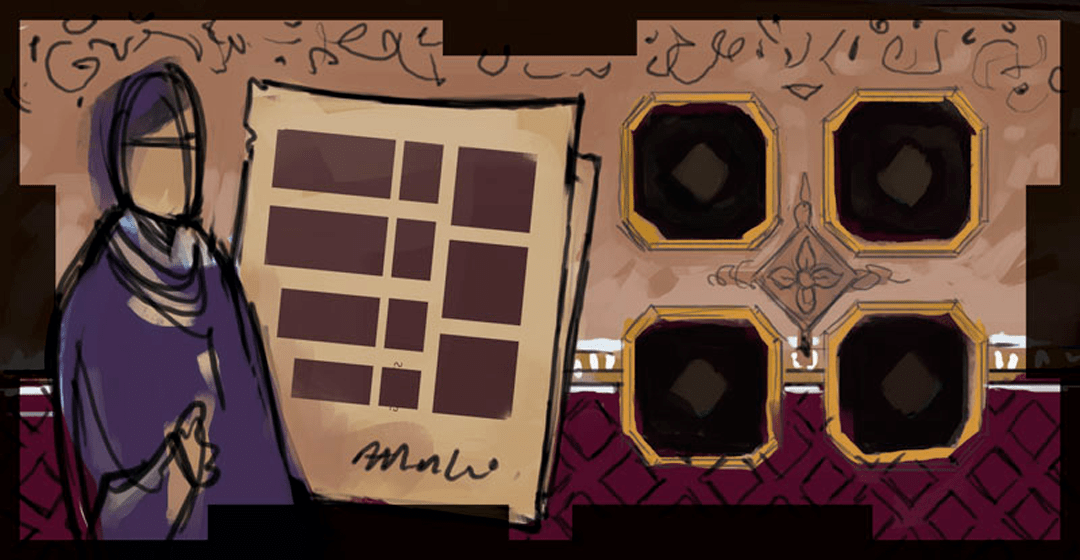
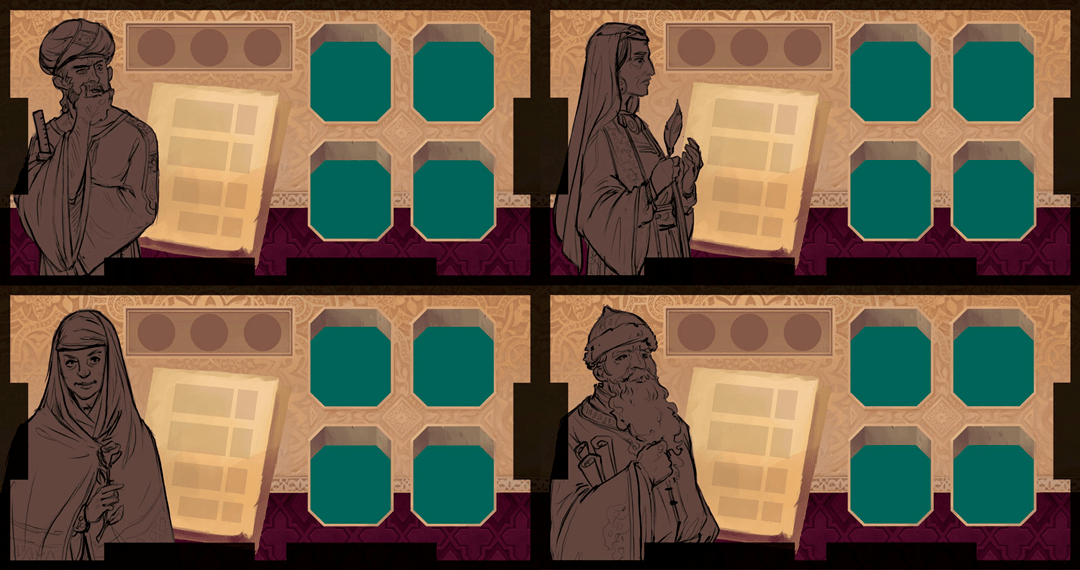
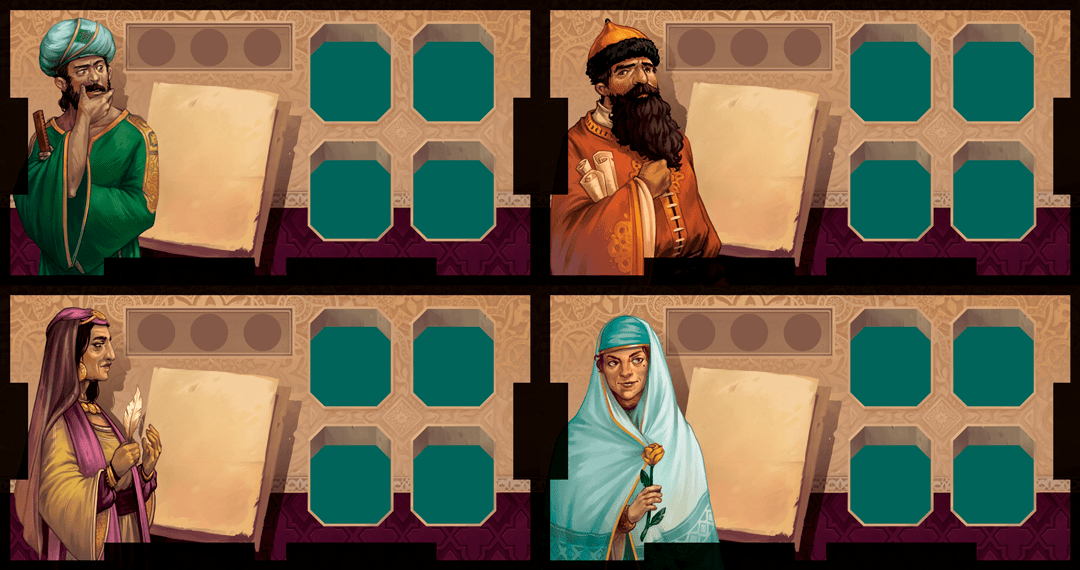
ENG | The Nasrid period was noted for its brightly colored decorations and ornamentation, how was the creation of the color palette for Sabika and what is the importance of color in the game?
Well that one was easy, I chose a wall I liked a lot when gathering references, and it gave me the color palette. The End! So that’s the tiles you see on the cover. The Alhambra is generous in terms of inspiration. But by being very different, those colors are actually quite limiting (which is a good thing per se) when it comes to having a modern take on the subject, so that nice and deep eggplant color came out being the most adequate, both fitting with the tiles and the sand color on the board. Plus it has this classy “royal” vibe. Win win.
ESP | El periodo nazarí destacaba por sus decoraciones y ornamentaciones de colores brillantes, ¿cómo fue la creación de la paleta de colores para Sabika y cuál es la importancia del color en el juego?
Bueno, eso fue fácil, elegí una pared que me gustó mucho al recopilar referencias, y eso me dio la paleta de colores. El final. Así que esos son los azulejos que se ven en la portada. La Alhambra es generosa en cuanto a inspiración. Pero al ser muy diferentes, esos colores son en realidad bastante limitantes (lo cual es bueno per se) a la hora de tener una visión moderna del tema, así que ese bonito y profundo color berenjena resultó ser el más adecuado, encajando tanto con los azulejos como con el color arena del tablero. Además, tiene un aire «real» con clase. Win win.
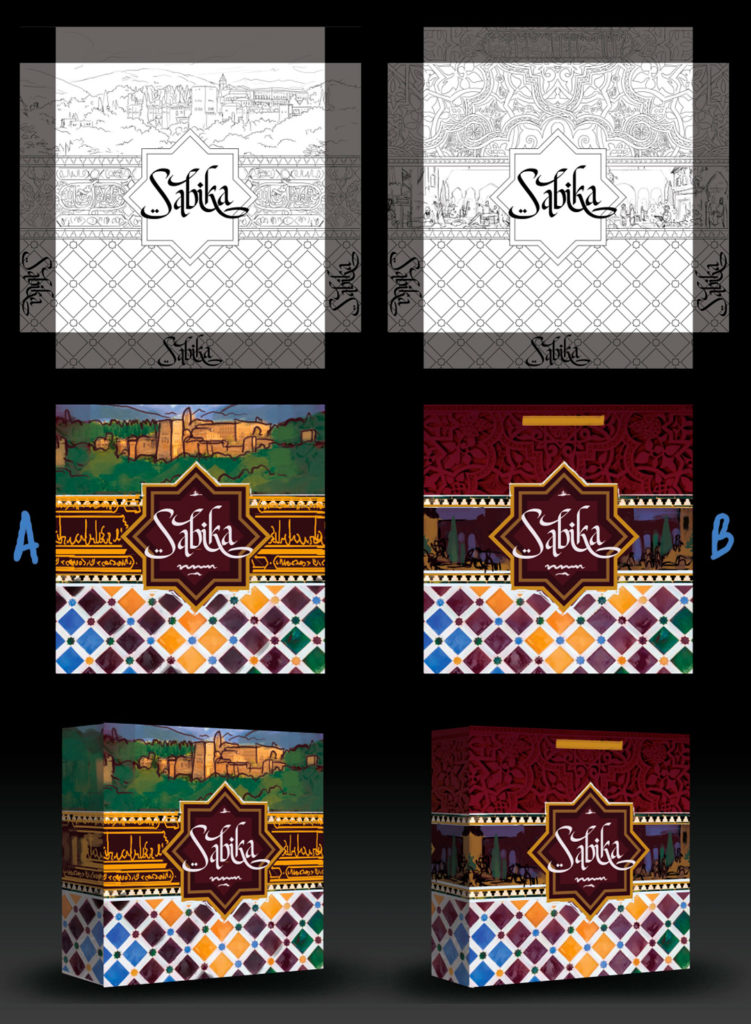
ENG | When illustrating a board game, the illustrator and designer must form a tandem to adapt the art to the game’s playability and usability. Could you give our readers 3 tips that you consider key to illustrate a board game?
- As I said earlier, try treating everything together.
- BGs are and will always stay products… So think product design, think marketing, think of the box on a shop’s shelf,… as much as you think of art. Art is secondary here.
- Probably more of a life advice that I go with since someone once told it to me, but I think it’s particularly relevant for artists because you are on your own and it’s sometimes hard to choose whether or not to accept a project, especially at the beginning : If it’s not 100% yes, it’s no. Board games are long projects so better make it so you fully enjoy the time spent on it. It will show. Plus, saying No is generally a better move for a career than saying Yes (even if I do admit that it requires a minimal level of financial stability).
ESP | Al ilustrar un juego de mesa, el ilustrador y el diseñador deben formar un tándem para adaptar el arte a la jugabilidad y usabilidad del juego. ¿Podrías dar a nuestros lectores 3 consejos que consideras clave para ilustrar un juego de mesa?
- Como he dicho antes, intentar tratarlo todo junto.
- Los juegos de mesa son y seguirán siendo siempre productos… Así que piensa en el diseño del producto, piensa en el marketing, piensa en la caja en la estantería de una tienda,… tanto como pienses en el arte. El arte es secundario aquí.
- Probablemente es más un consejo de vida que sigo ya que alguien me lo dijo una vez, pero creo que es particularmente relevante para los artistas porque estás solo y a veces es difícil elegir si aceptar o no un proyecto, especialmente al principio : Si no es 100% sí, es no. Los juegos de mesa son proyectos largos, así que más vale que disfrutes plenamente del tiempo que le dediques. Se notará. Además, decir No suele ser mejor para una carrera que decir Sí (aunque reconozco que requiere un mínimo de estabilidad económica).
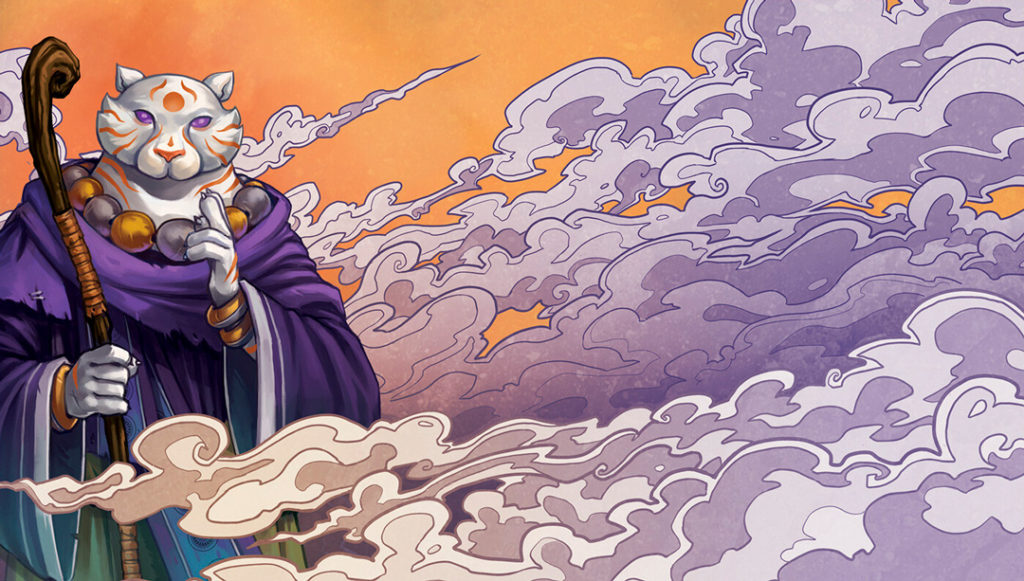
ENG | Working as an illustrator is dedication, effort and passion. What do you like most about your work as an illustrator?
Haha well, it’s a pretty romanticized idea of the job. I do not fit the “passionate artist” box at all, and would rather define myself as a Creative, as I enjoy doing a lot of different things. So what I like about being a freelance illustrator is primarily the freelance part, aka. freedom. And for the creative aspects, illustration included, it’s kind of the same : I enjoy the diversity of the projects I can involve myself in. I hate cages, and through my projects, I can reinvent myself and have the power to live many different lives.
ESP | Trabajar como ilustrador es dedicación, esfuerzo y pasión. ¿Qué es lo que más te gusta de tu trabajo como ilustradora?
Jaja bueno, es una idea bastante romántica del trabajo. Yo no encajo para nada en la casilla de «artista apasionado», y preferiría definirme como Creativa, ya que disfruto haciendo un montón de cosas diferentes. Así que lo que me gusta de ser ilustradora freelance es sobre todo la parte freelance, es decir, la libertad. Y en cuanto a los aspectos creativos, incluida la ilustración, es más o menos lo mismo: disfruto con la diversidad de proyectos en los que puedo participar. Odio las jaulas, y a través de mis proyectos, puedo reinventarme y tener el poder de vivir muchas vidas diferentes.
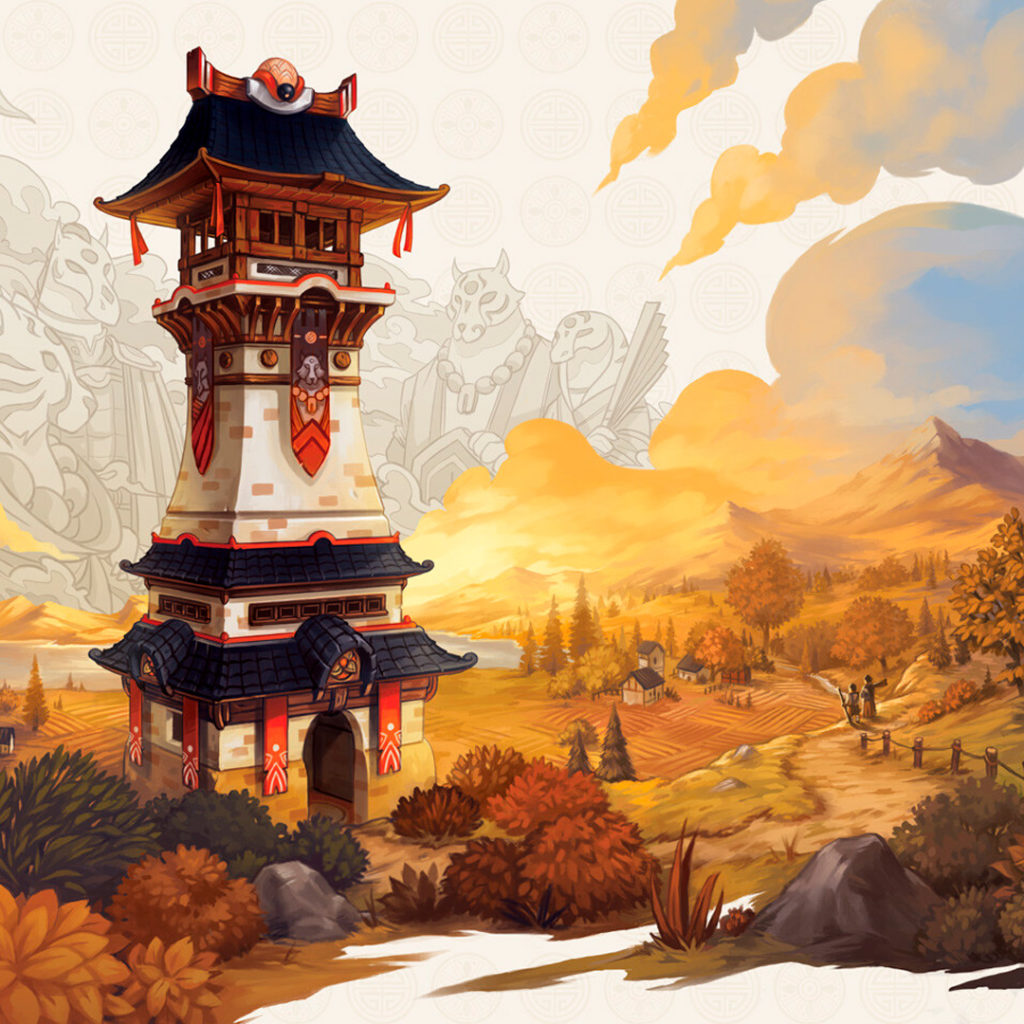
ENG | Finally, what projects are you currently working on and where can we follow your work?
Boardgames, boardgames and boardgames! Deities came out approx. at the same time as Sabika. Two other games and one extension are waiting for release, and I’m currently working hard on two other projects, one focused on trees and the other on dinosaurs. Aside from that I’m working on a small interactive game in my personal time as I enjoy writing and programming as well, but it’s taking time!
I grew a bit tired of social medias so I’m not much present online at the time being but you can always check my work on my portfolio : www.laurabevon.com
ESP | Por último, ¿en qué proyectos está trabajando actualmente y dónde podemos seguir su trabajo?
¡Juegos de mesa, juegos de mesa y juegos de mesa! Deities salió aproximadamente al mismo tiempo que Sabika. Otros dos juegos y una ampliación están a la espera de salir, y actualmente estoy trabajando duro en otros dos proyectos, uno centrado en los árboles y otro en los dinosaurios. Aparte de eso, estoy trabajando en un pequeño juego interactivo en mi tiempo libre, ya que también me gusta escribir y programar, ¡pero me está llevando tiempo!
Me cansé un poco de las redes sociales, así que no estoy muy presente en línea por el momento, pero siempre se puede ver mi trabajo en mi portfolio : www.laurabevon.com
Muchas gracias Laura 😉
Thank you for the interview!
(Todas las imágenes cedidas por Laura Bevon)

